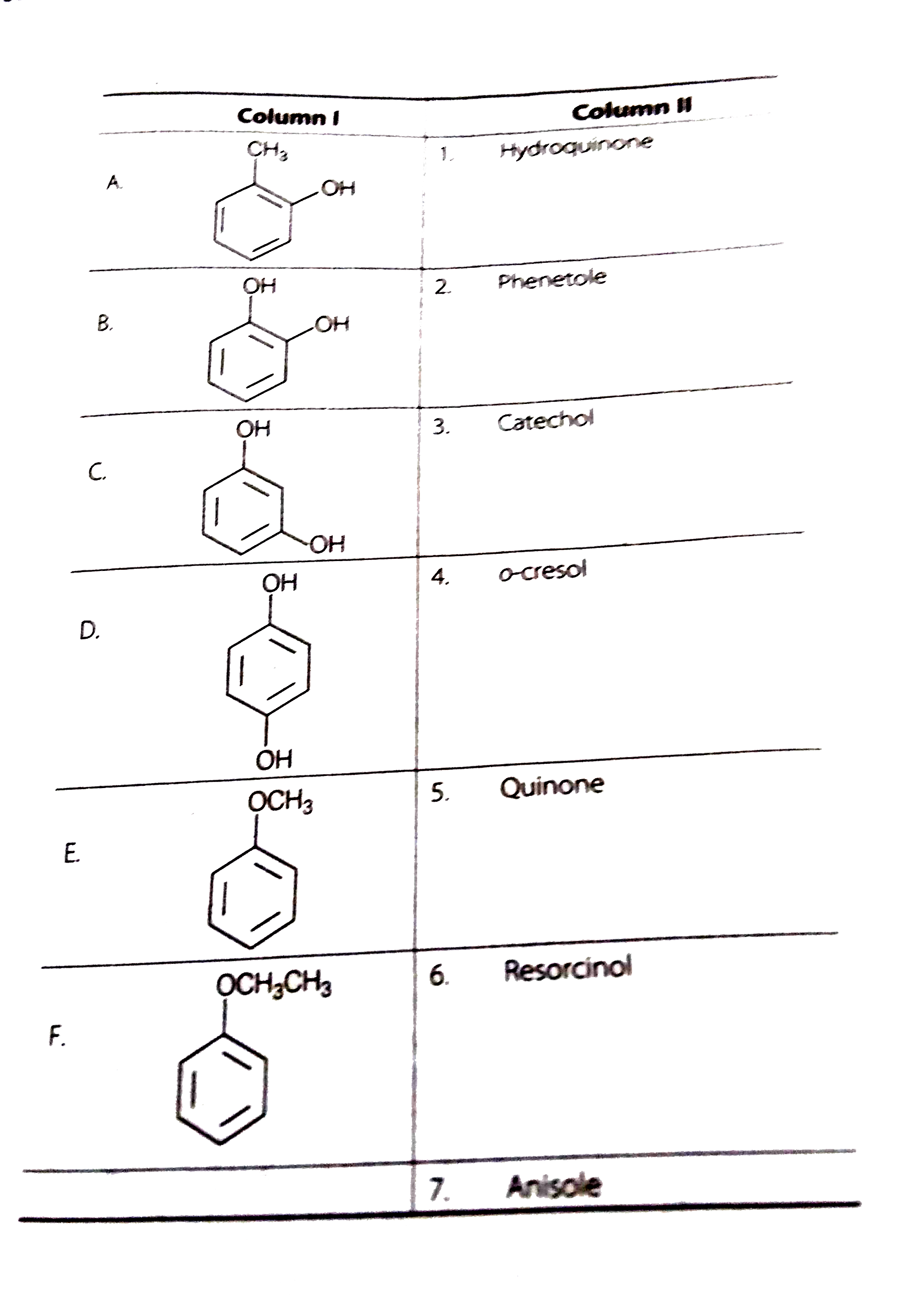Match the example given in Column I with the name of the reaction in Column II.


Topper's Solved these Questions
- ALDEHYDE, KETONES AND CARBOXYLIC ACIDSBOOK - NCERT EXEMPLAR ENGLISHCHAPTER - ALDEHYDE, KETONES AND CARBOXYLIC ACIDSEXERCISE - Long Answer Type Questions
4 Videos
- ALDEHYDE, KETONES AND CARBOXYLIC ACIDSBOOK - NCERT EXEMPLAR ENGLISHCHAPTER - ALDEHYDE, KETONES AND CARBOXYLIC ACIDSEXERCISE - Long Answer Type Questions
4 Videos
- ALCOHOLS, PHENOLS AND ETHERSBOOK - NCERT EXEMPLAR ENGLISHCHAPTER - ALCOHOLS, PHENOLS AND ETHERSEXERCISE - All Questions
74 Videos
- AMINESBOOK - NCERT EXEMPLAR ENGLISHCHAPTER - AMINESEXERCISE - LONG ANSWER
3 Videos
Similar Questions
Match the reactions given in Column I with the type of reactions given in Column II

View SolutionMatch the statement given in Column I with the phenomenon given in Column II.

View SolutionMatch the reactions given in Column I with the reaction types in Column II.

View SolutionMatch the common names given in Column I with the IUPAC names given in Column II.

View SolutionMatch the examples given in column I with the shapes of the compounds given in column II and mark the appropriate choice .

View SolutionMatch the pollutants given in Column I with their effects given in Column II.

View SolutionMatch the polymer given in Column I with their chemical names given in Column II

View SolutionMatch the reactions given in Column I with the statements given in Column II

View SolutionMatch the reactions given in Column I with the statements given in Column II

View SolutionMatch the structures of the compounds given in Column I with the name of the compounds given in Column II.

View Solution

